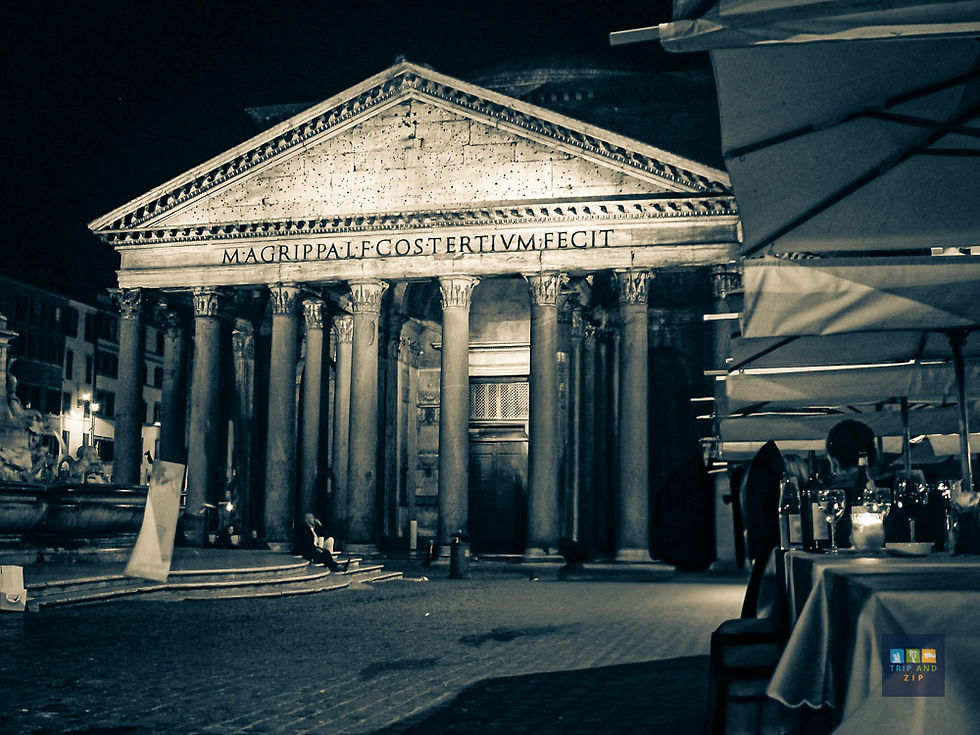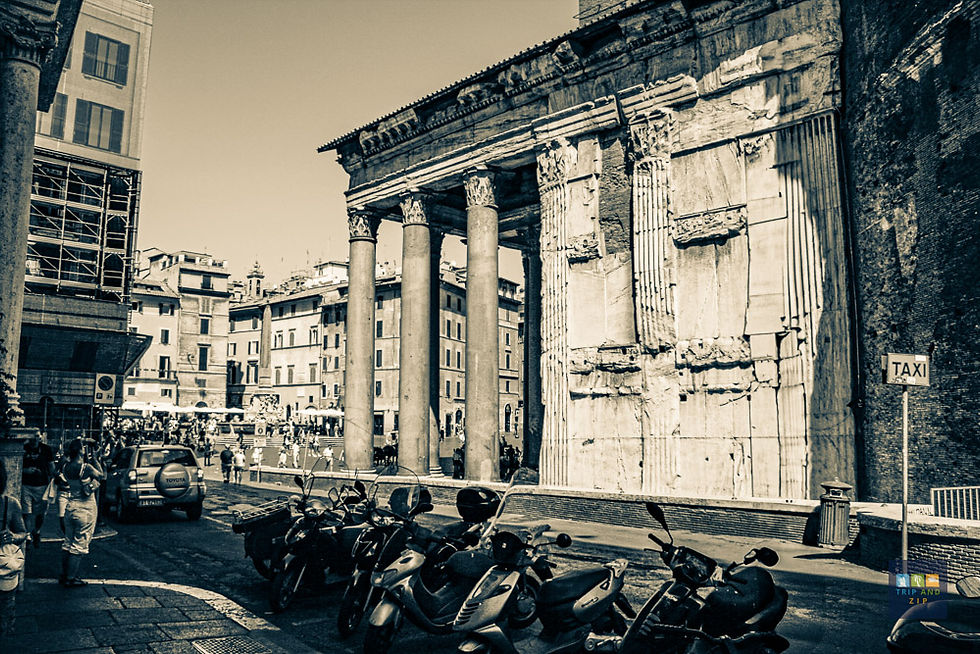The Eternal Beauty of the Pantheon in Rome
- Trip And Zip

- May 18, 2007
- 3 min read
Updated: Apr 11
In my view, few places in the world capture the grandeur and genius of ancient civilization like the Pantheon in Rome. Every time I stand before this monumental structure, I feel a deep admiration for the remarkable engineering, vision, and ambition of the Roman Empire. Their legacy endures not only in history books but in structures like this—so perfectly designed that they have withstood the test of time for nearly 2,000 years.

Beyond its architectural brilliance, the Pantheon holds a special place in my heart. The Piazza della Rotonda, the square that surrounds it, is one of my favorite spots in Rome. During various trips, I’ve spent hours here simply soaking in the atmosphere—watching street musicians, enjoying a coffee at a nearby café, or sipping a glass of Brunello di Montalcino as the sun sets behind the ancient columns, admiring the perfect harmony of ancient and modern life. The Pantheon is more than a historical site; it's a living part of Rome's soul.

The current Pantheon was built in 126 AD, during the reign of Emperor Hadrian, but its origins reach much further back. The original temple was commissioned by Marcus Agrippa around 27 BC, during the reign of Augustus. Agrippa’s legacy went far beyond architecture—he was a strategist, statesman, and key figure in shaping early imperial Rome, leaving his mark on aqueducts, baths, and temples throughout the city. That initial structure was destroyed by fire, and instead of repairing it, Hadrian ordered a complete reconstruction, creating the masterpiece we see today.
Curiously, Hadrian did not take credit for the new building. Instead, he preserved Agrippa's original inscription on the façade: “M.AGRIPPA. L.F. COS. TERTIVM. FECIT” — Marcus Agrippa, son of Lucius, consul for the third time, built this.

The dome of the Pantheon is its most astonishing feature. Measuring 43.3 meters in diameter, it was the largest dome in the world for over 1,500 years, and still holds the title for the largest unreinforced concrete dome ever built. The Romans achieved this with brilliant use of materials, making the concrete lighter as it ascended—using travertine at the base, then tuff, brick, and finally pumice near the top. The central oculus, a 9-meter-wide circular opening, not only lets in natural light but also reduces the dome’s weight. Rain entering through it is drained away by a hidden system of floor holes—another detail of Roman engineering genius.

Over the centuries, the Pantheon has changed function and meaning—transformed into a Christian church in 609 AD, later serving as a royal tomb, and eventually becoming a civic symbol of Italian heritage. It survived plunder, weather, and changing empires, yet its design has never been surpassed. Step inside, and the interior reveals a space that still inspires reverence: marble floors patterned with geometric precision, altars and chapels lining the circular walls, and the soft, shifting light filtering through the oculus, tracing slow arcs across the dome.
Among its most notable features are the tombs of Italian kings—Victor Emmanuel II and Umberto I—as well as the grave of Raphael, the celebrated Renaissance master, whose epitaph modestly reads: “Here lies Raphael, by whom Nature feared to be outdone while he lived, and when he died, feared she too would die.”




The Pantheon offers more than architecture—it invites you into something timeless. Whether admired in golden morning light or under the soft glow of evening, it continues to amaze—just as it did centuries ago. It isn’t merely a relic of the past but a symbol of Rome’s eternal grandeur, a place where history, architecture, and daily life still coexist.
For me, every visit to the Pantheon and Piazza della Rotonda is a return to Rome’s soul, where the past feels close, and the voice of an empire still whispers through every stone and column.




Comments